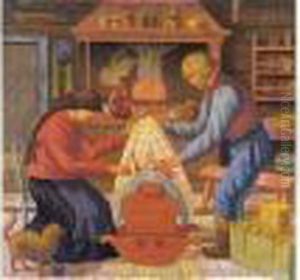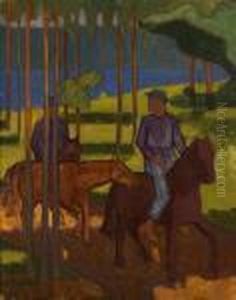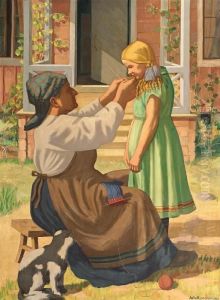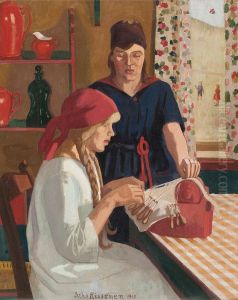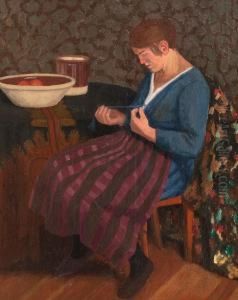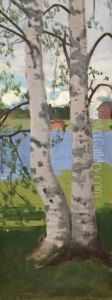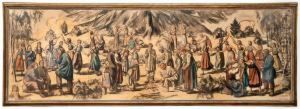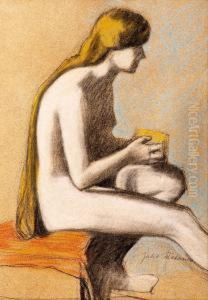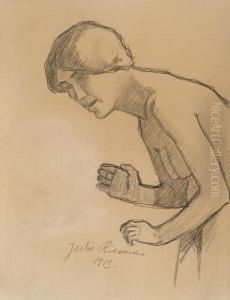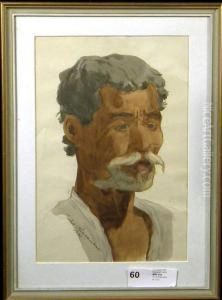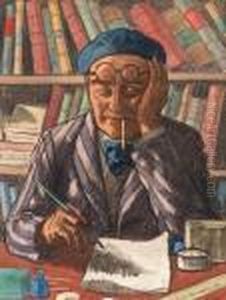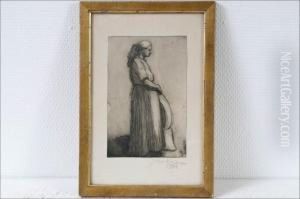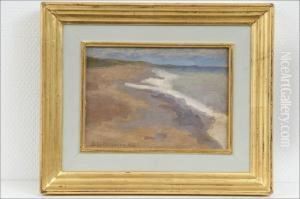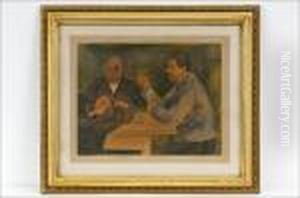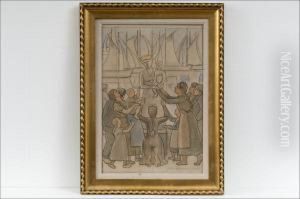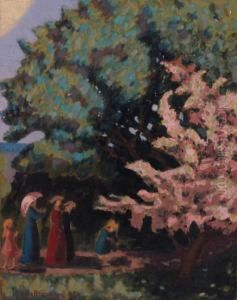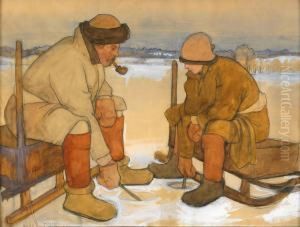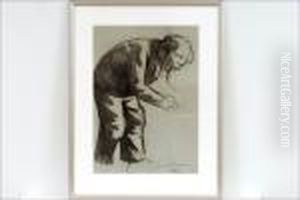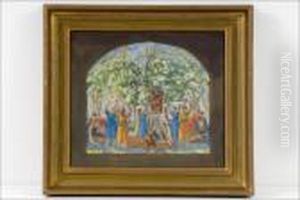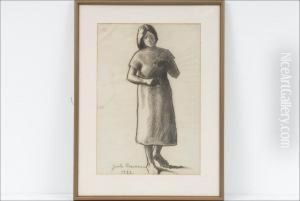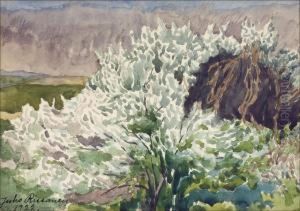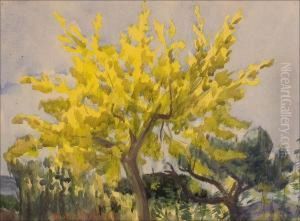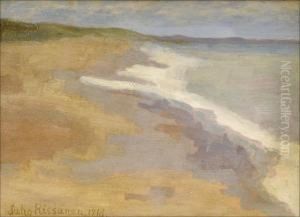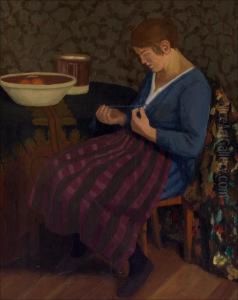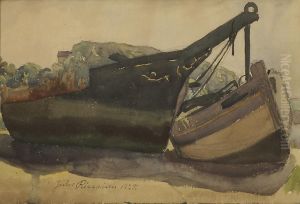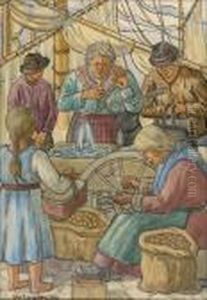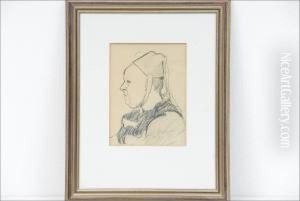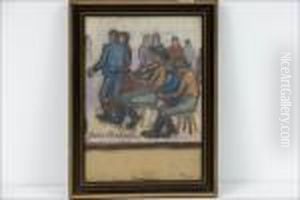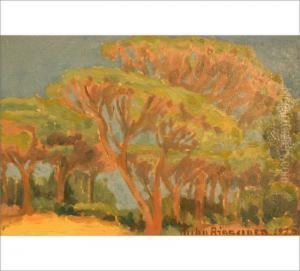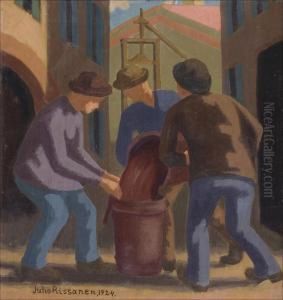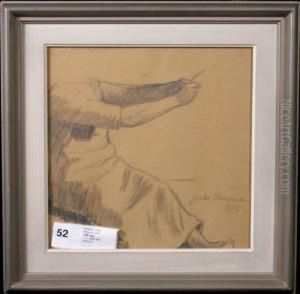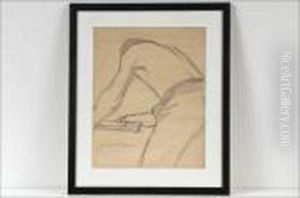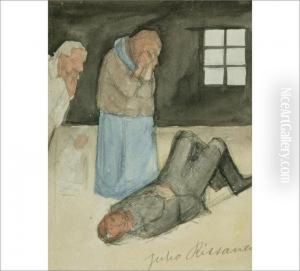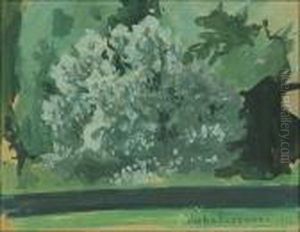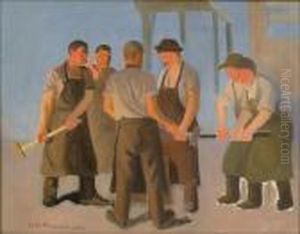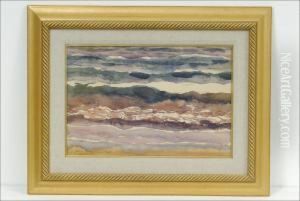Juho Vilho Rissanen Paintings
Juho Vilho Rissanen, commonly known as J.V. Rissanen, was a Finnish painter known for his contributions to Finnish art and culture. Born on April 24, 1873, in Kuopio, Finland, Rissanen grew up in a time when Finland was undergoing a national awakening, with a growing interest in its own culture, language, and identity.
Rissanen showed an early talent for art, which led him to study at the Finnish Art Society's drawing school in Helsinki. He later continued his studies in Paris, which was a common destination for aspiring artists of his era. There, he was exposed to various art movements and styles, including Impressionism and Post-Impressionism, which would influence his work.
His paintings often depicted scenes from Finnish rural life, including the hardships and joys of peasant life. He was particularly interested in the lives of the working class and the poor, which was a relatively uncommon subject in Finnish art at the time. Rissanen's work was characterized by a compassionate portrayal of his subjects, with a focus on their dignity and humanity.
In addition to his paintings, Rissanen also worked with frescoes and created numerous works for public buildings, contributing to the Finnish tradition of public art. His style evolved over time, incorporating elements of expressionism and even leaning towards a more national romantic style, particularly evident in his later works.
During his lifetime, Rissanen was well-respected and received several awards and honors. He played a significant role in the Finnish art scene and was an influential figure for younger generations of Finnish artists.
J.V. Rissanen passed away on March 12, 1950, in Kuopio, but his legacy continues to be celebrated in Finland. His works are held in various Finnish museums, including the Ateneum Art Museum in Helsinki, and his contributions to Finnish art and culture are still acknowledged and appreciated today.
